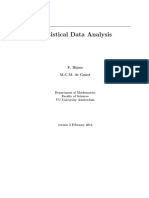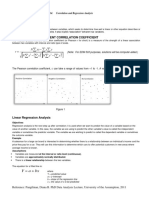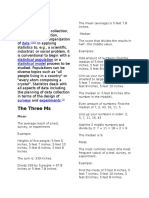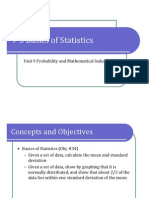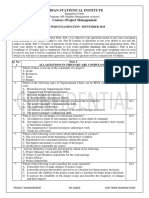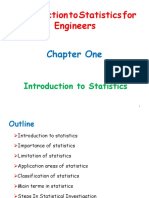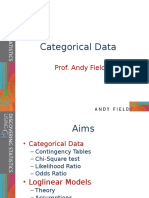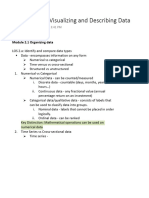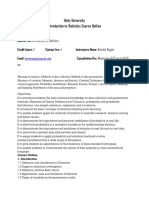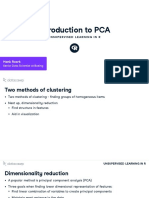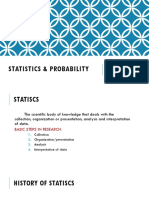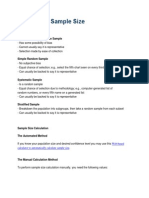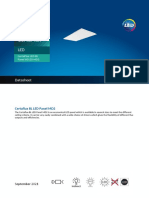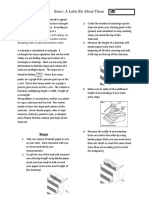0% found this document useful (0 votes)
144 views45 pagesIntroduction To Data and Statistics With R
This document provides an introduction to data and statistics. It covers foundational topics like descriptive versus inferential statistics, types of data, measures of central tendency and spread, population versus sample, data visualization techniques, and exploring categorical variables. The goal is to introduce statistics as a science of understanding and analyzing data to make data-driven decisions. Key concepts covered include measures like mean, median, mode, variance, standard deviation, and interquartile range. Visualization techniques like scatter plots, histograms, box plots, and bar plots are also introduced.
Uploaded by
APPIAH ELIJAHCopyright
© © All Rights Reserved
We take content rights seriously. If you suspect this is your content, claim it here.
Available Formats
Download as PDF, TXT or read online on Scribd
0% found this document useful (0 votes)
144 views45 pagesIntroduction To Data and Statistics With R
This document provides an introduction to data and statistics. It covers foundational topics like descriptive versus inferential statistics, types of data, measures of central tendency and spread, population versus sample, data visualization techniques, and exploring categorical variables. The goal is to introduce statistics as a science of understanding and analyzing data to make data-driven decisions. Key concepts covered include measures like mean, median, mode, variance, standard deviation, and interquartile range. Visualization techniques like scatter plots, histograms, box plots, and bar plots are also introduced.
Uploaded by
APPIAH ELIJAHCopyright
© © All Rights Reserved
We take content rights seriously. If you suspect this is your content, claim it here.
Available Formats
Download as PDF, TXT or read online on Scribd
/ 45


